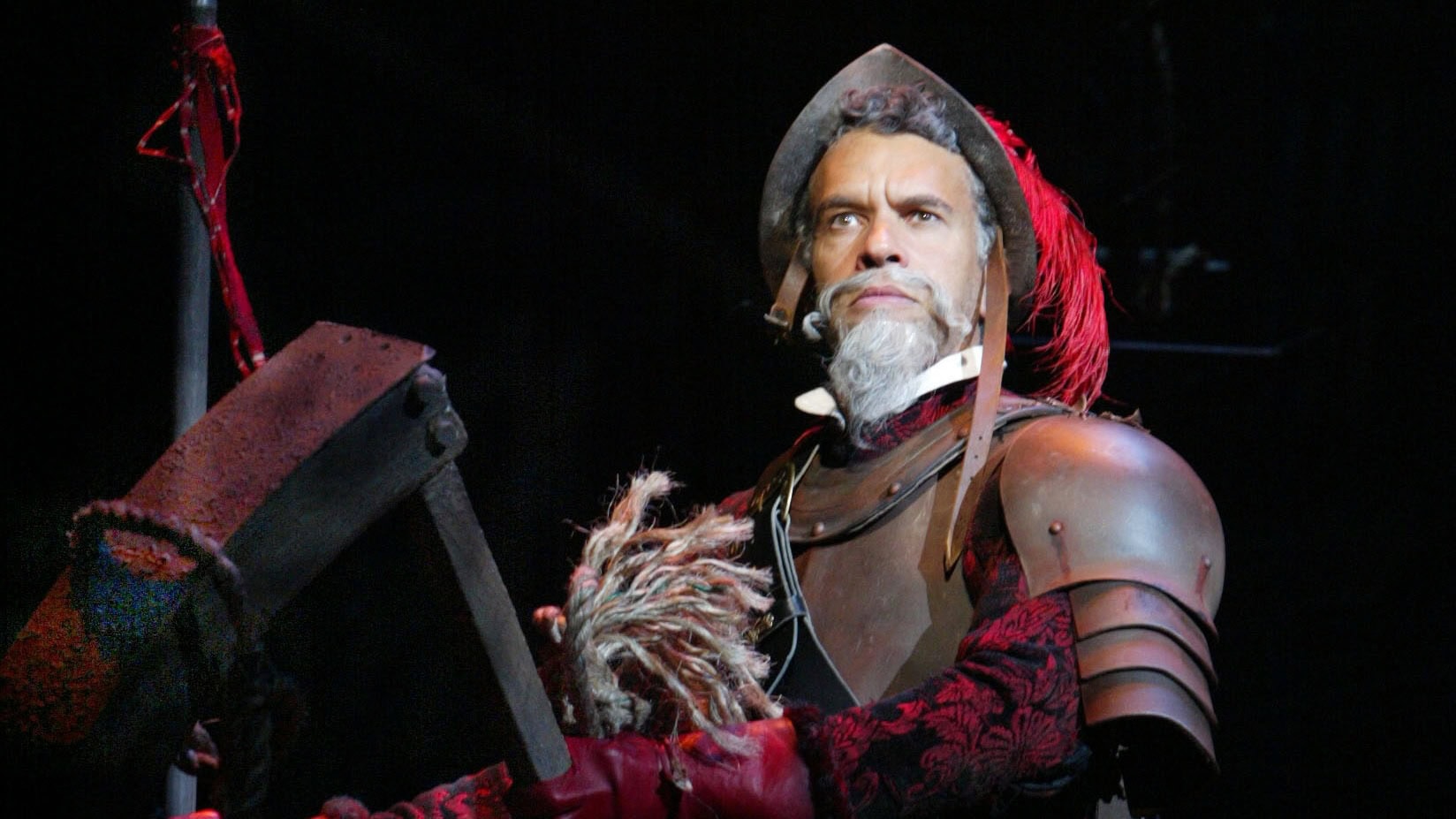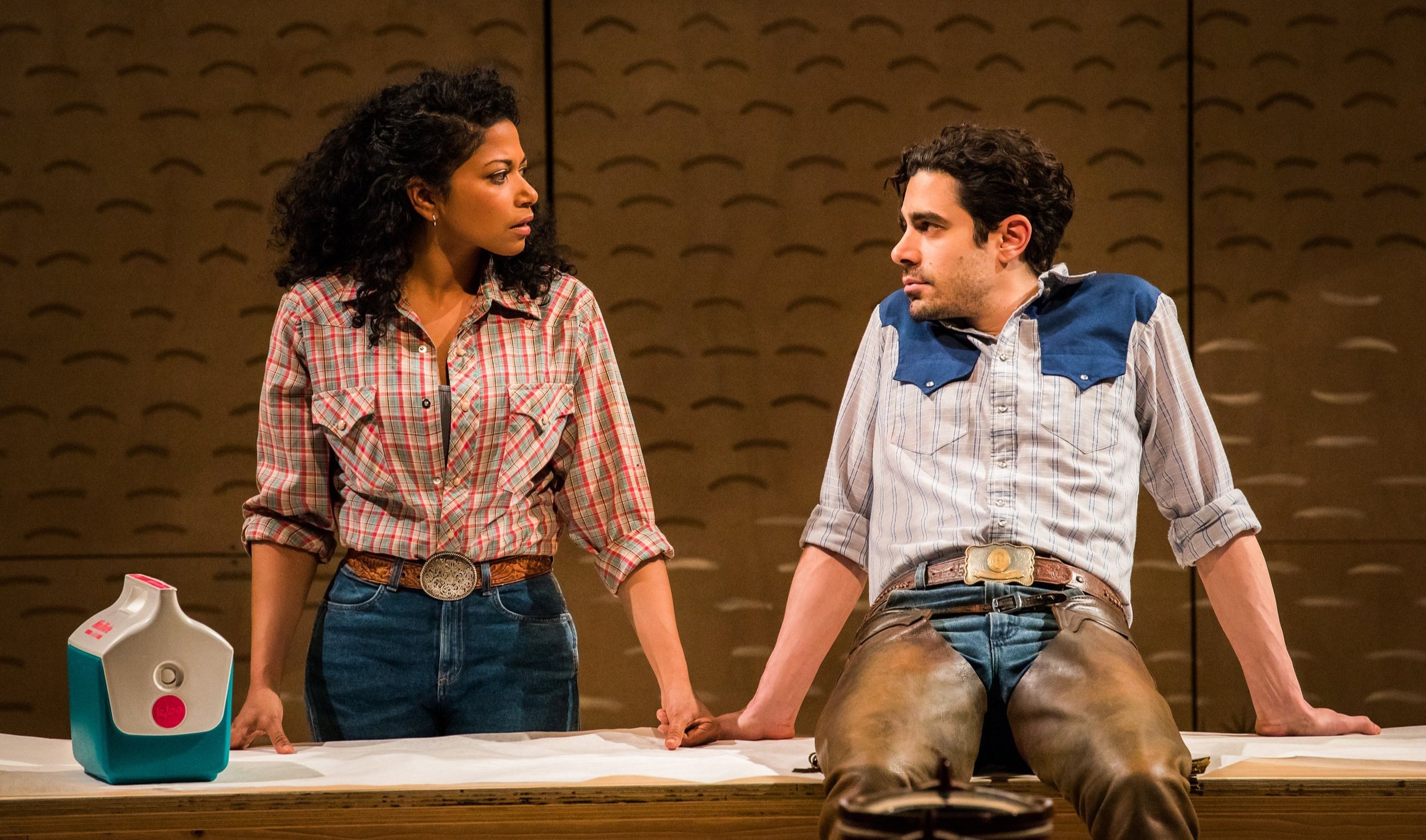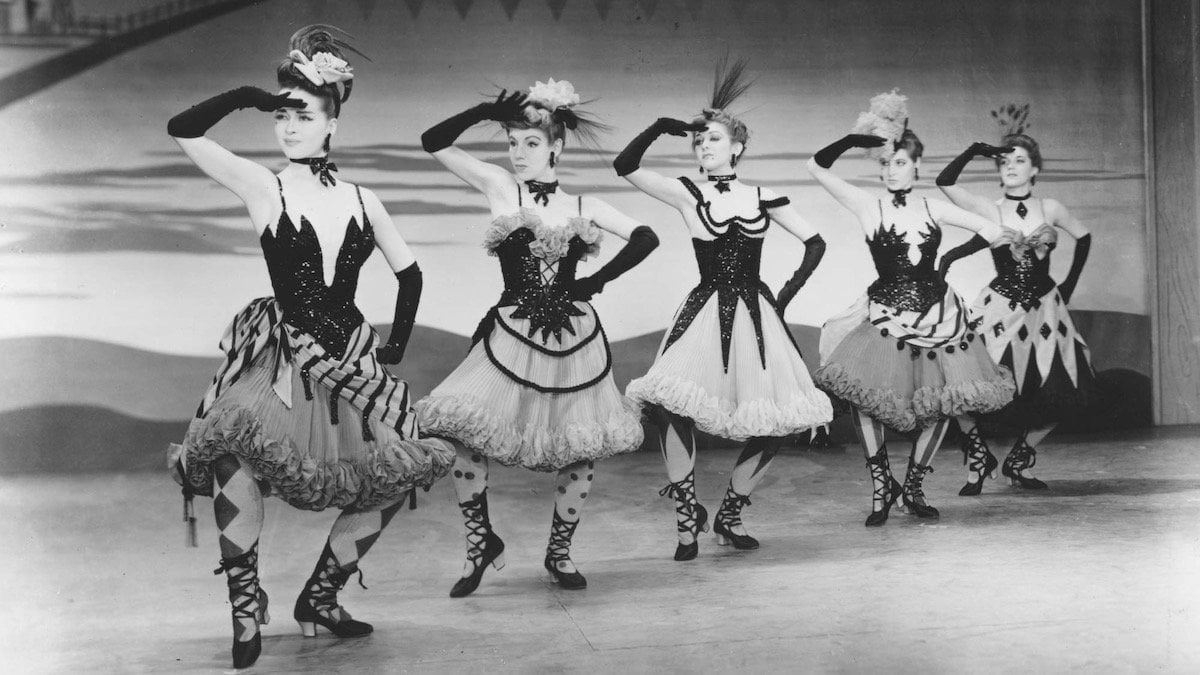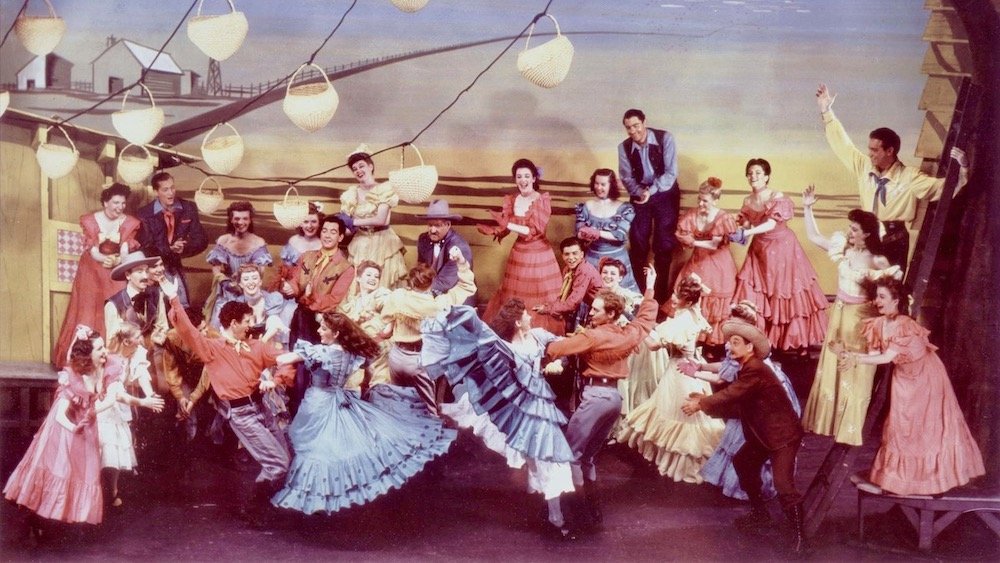
Rodgers & Hammerstein’s Oklahoma! (US/UK) celebrates its 80th anniversary this year. The ebullient, genre-defining show, which set a new standard for the Broadway musical, opened at the St. James Theatre on March 31, 1943.
How well do you know the musical that changed Broadway? Theatre historian Laurence Maslon is here to help.
Maslon is Arts Professor and Associate Chair at New York University’s Tisch School of the Arts. An Emmy-nominated screenwriter, he is the author of several books about the musical theatre, including the companion volume to the PBS series Broadway: The American Musical, and the editor of the Library of America’s two-volume set American Musicals (1927-1969), containing 16 classic Broadway librettos. Maslon also hosts the podcast Broadway to Main Street, a weekly radio program devoted to the greatest songs of the American musical theatre.
In a series of essays written exclusively for the official Rodgers & Hammerstein website, Maslon explores several aspects of Rodgers & Hammerstein’s Oklahoma! In the pieces excerpted below, he looks at the show’s groundbreaking narrative structure, Agnes de Mille’s innovative choreography, and the musical’s relationship to the real-life history of the Oklahoma territory. To read the full essays, click through to rodgersandhammerstein.com.
…
2019 Broadway production of Rodgers & Hammerstein’s Oklahoma! (Little Fang)
IT’S NOT JUST WHAT THEY DID – IT’S WHAT THEY DIDN’T DO: Oklahoma! and Musical Narrative
Perhaps if the creative team behind Oklahoma! had liked George Church’s second-act specialty tap number just a little bit more, the history of the American musical would have been written differently.
Rodgers & Hammerstein’s Oklahoma! has been justly recognized as a trailblazer (or perhaps more fittingly as entering a “new frontier”) for the role it played in evolving the narrative musical on Broadway, back in 1943. (Since the 1950s, critics have also referred to this kind of show as an “integrated” musical, but it’s a term that, in my view, is no longer relevant or helpful.) A narrative musical, as the name implies, places a priority on telling a narrative – a story with a beginning, middle and end. What made Oklahoma! groundbreaking as a narrative musical was not simply that it told a story (dozens of operas, operettas and musical comedies had done that for decades), but the ruthless discretion that Rodgers, Hammerstein and their collaborators deployed towards dialogue, music, lyrics, staging, dances and décor in order to tell that story. Like Michelangelo chiseling away all the superfluous marble that wasn’t essential to his statue, the creative team was boldest in paring away all the obstacles that got in the way of their story…
One of the most extraordinary aspects of Oklahoma!’s narrative structure is not only the way that all of the initial plot passes in front of Aunt Eller’s porch, it’s also that the first scene of the first act takes up 40% of the entire show. In addition, more than half the score’s songs are introduced in that first scene. No musical had done anything quite like that before; typically, back then, a show would alternate between full scenes and “in-one” scenes (in front of a show curtain so that scenery could be changed) with a frenetic pace and reckless abandon to keep the audience entertained. In Oklahoma!, the narrative of the show dictated its pace; to paraphrase Hammerstein, the writers refused to recognize the existence of this musical comedy convention…
Read more here.
1947 Broadway production of Rodgers & Hammerstein’s Oklahoma! (from the R&H Archives)
OUT OF MY DREAMS: The Psychological Canvas of Choreographer Agnes de Mille
If she had done nothing else other than create the “Dream Ballet” that concludes Act 1 of Oklahoma!, choreographer Agnes de Mille would have contributed a great leap forward in the American musical.
As it happens, de Mille created far more than that – including collaborating extensively on the premieres of the first three Rodgers & Hammerstein musicals – and became, seemingly overnight, the most indispensable choreographer of the post-war era. It wasn’t always easy and it certainly wasn’t inevitable, but the petite, determined, often querulous, perennially anxious Agnes de Mille changed the face – and the arms and the torso and the legs and the feet – of musical narrative on Broadway. She was, to use the phrase that suits her best (and deployed by Ted Chapin, CCO of The Rodgers & Hammerstein Organization), formidable…
Her insightful way of crafting narrative through bodies-in-motion reached its apotheosis in the dream ballet that concludes Oklahoma!’s Act One, known as “Laurey Makes Up Her Mind.” The focus was to be on Laurey, the leading character, as she contemplates choosing either Curly or Jud to escort her to the box social. Oscar Hammerstein initially proposed a ballet with a circus theme that would be, in his words, “bizarre, imaginative and amusing, never heavy,” but de Mille was of another opinion:
I said [to Hammerstein], this is the kind of dream that young girls who are worried have. She’s frantic because she doesn’t know which boy to go to the box social with. And so, if she had a dream, it would be a dream of terror, a childish dream, a haunted dream. Also, you haven’t any sex in the first act. He said, haven’t I? I said, goodness, no. All nice girls are fascinated by [the darker side of sexuality]. Mr. Hammerstein, if you don’t know that, you don’t know about your own daughters…
Read more here.
Oklahoma, circa 1906 (Library of Congress, Geography and Map Division)
WE KNOW WE BELONG TO THE LAND: The Territory of Oklahoma!
Oscar Hammerstein II was always a clever and engaged fellow, the kind of fellow, you suspect, who grew up reading the daily newspaper even as a kid. Is it possible, then, that on November 10, 1907, as a twelve-year-old, he read the full-page New York Times article: “And Now Oklahoma – the Forty-Sixth State”? Might the young Hammerstein have been fascinated by a brand-new state?
Thirty-six years later, a musical that concluded with an ode to Oklahoma’s incipient statehood fascinated Broadway – and, eventually, most of America…
Although Oklahoma!, as a piece of musical theater, is largely animated by the romantic trials and tribulations of its two leading couples, its thematic spine, like that of its source material, Green Grow the Lilacs (written by Lynn Riggs, who was born and raised in Oklahoma), is the desire to expand, to live on one’s own land, and belong to it, too…
The musical Oklahoma! is set in the Verdigris Valley, in the heart of Indian Territory, within a few miles from the town of Claremore, a few years after the turn of the century. (Claremore is about 30 minutes northeast of Tulsa, which would only become a major city after an oil boom in the 1910s.) By 1900, Claremore had a population of 855, a rail station, a post office, and several hotels (and was the birthplace of Will Rogers in 1879). It’s worth taking note that, despite (or perhaps because of) the relocation discord with the Indigenous nations, the word “Indian” is never mentioned once in Oklahoma! proper – the stage directions reveal the setting simply as “Indian Territory. Now Oklahoma” – and although Aunt Eller’s farm is nearly at the junction of the Cherokee, Creek and Osages Nations, there is never even a passing reference to tribal culture. (To be fair, there is practically no mention of Indigenous people in Lynn Riggs’s original play, either.)…
Oklahoma (the state) and Oklahoma! (the musical) are part of our complex national psyche. Obsession, rivalries, revenge, gunslinging, Manifest Destiny, frontier justice and death have always been part of Oklahoma!, even if those thornier aspects have often been papered over in various productions and films over the years.
Read more here.
…
Header Image: 1947 Broadway production of Rodgers & Hammerstein’s Oklahoma! (from the R&H Archives)
To license a production of Rodgers & Hammerstein’s Oklahoma!, visit the Concord Theatricals website in the US or UK.
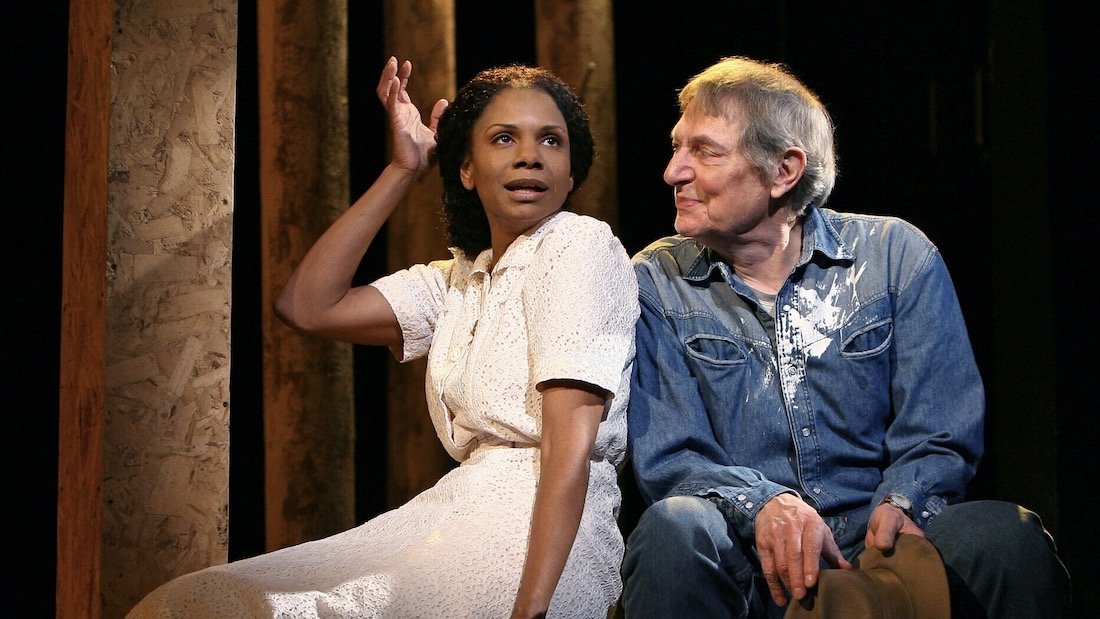
Plays that Inspired Musicals
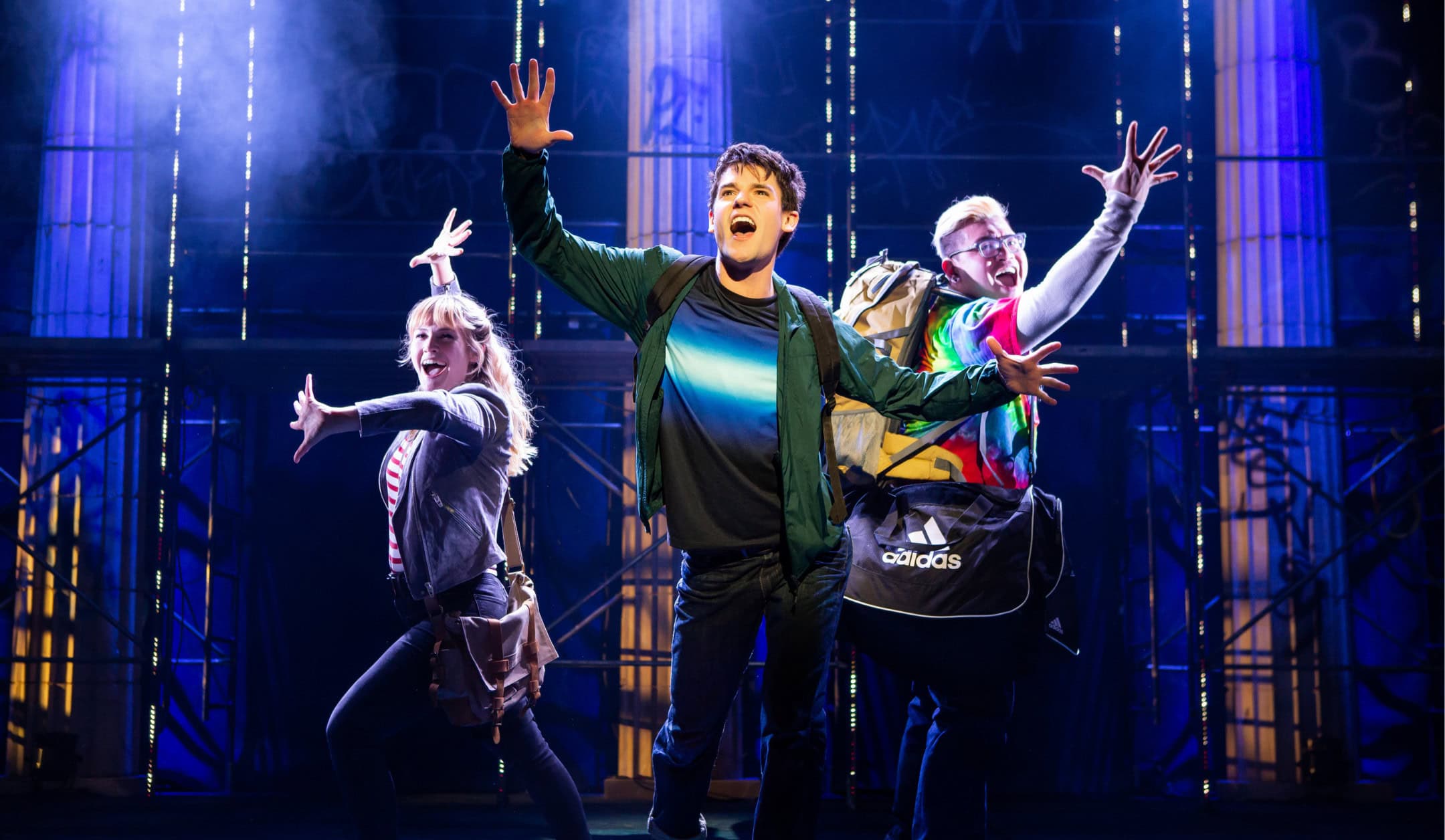
QUIZ: Which Character from The Lightning Thief Are You?
